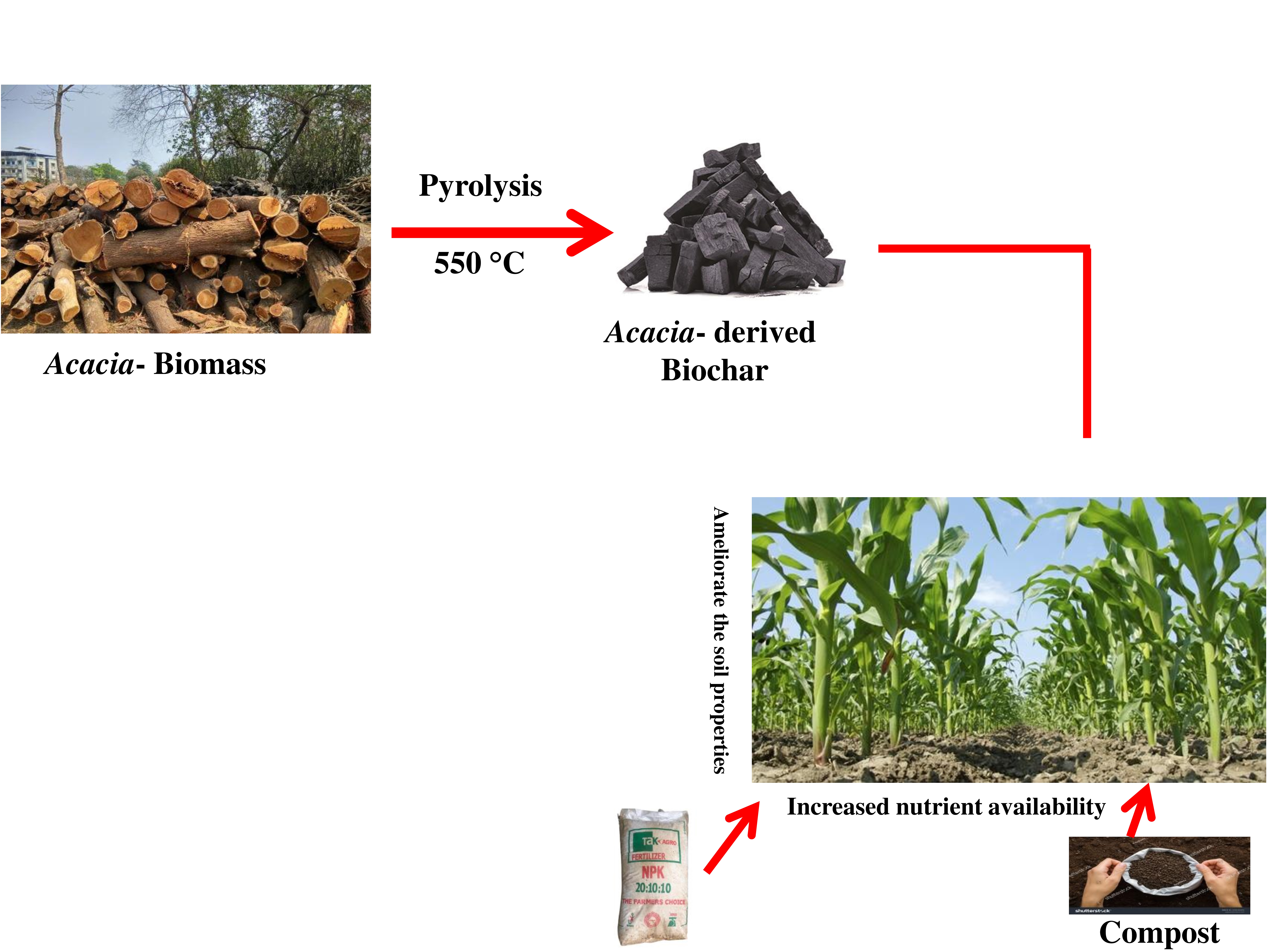
Pakistan's agricultural soils exhibit a high tendency for leaching, low quantities of organic matter, and minimal microbial activity. The situation is aggravated by human activities such as bush burning, mining, sand extraction, and ongoing conventional methods of farming. These methods, together with the naturally low amounts of organic matter, result in the soil being deprived of essential nutrients. These nutrients are necessary for the optimal growth and yield of crops. Enhancing crop production such as maize and other crops on nutrient-deficient soils has the potential to improve household food security in Pakistan, necessitating the implementation of appropriate measures. Various techniques have been devised to mitigate the deleterious impacts on plants. The use of biochar, an organic substance produced through pyrolysis with limited oxygen supply, as a soil amendment is currently attracting significant attention globally. This study aimed to assess the effectiveness of a mixture of Acacia-biochar, NPK fertilizer, and compost in improving soil quality and boosting yields of crops. The first variable examined in the study was the biochar dosage, which was divided into four levels: no biochar, a biochar dosage of 5, 10, and 15 t ha-1. Additionally, it is important to take into account the selection of fertilizer, which consists of four different types: non-fertilizer, NPK, compost, and NPK + compost. The results showed that applying biochar at a rate of 10 t ha-1, along with NPK + compost, improved the availability of phosphorus and potassium, and significantly enhanced soil quality, as indicated by a soil quality rating value of 18. Applying a rate of 10 t ha-1 of biochar, along with NPK + compost, led to the highest dry weight of seed maize, achieving 12.80 t ha-1. This represents a 40% augmentation in relation to the conditions without biochar and with the addition of NPK + compost. When the seed maize is weighed without any moisture content, the yield of 12.80 t ha-1 results in the highest level of efficient agronomic value, which is 120.31%. Additionally, the feasibility value for growing maize in drylands is 1.28.
Total file downloads: 23